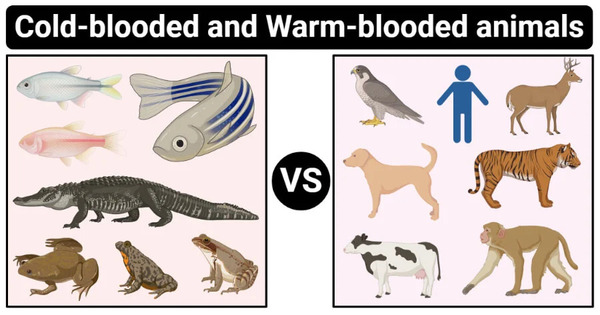Introduction to Cold-Blooded and Warm-Blooded Animals
What Are Cold-Blooded Animals?
Key Characteristics
Examples of Cold-Blooded Animals
What Are Warm-Blooded Animals?
Key Characteristics
Examples of Warm-Blooded Animals
Cold-Blooded vs Warm-Blooded: Key Differences
Body Temperature Regulation
Energy Efficiency
Adaptations to the Environment
Pros and Cons of Being Cold-Blooded
Pros and Cons of Being Warm-Blooded
Survival Strategies
How Cold-Blooded Animals Survive Winter
Warm-Blooded Animals in Extreme Conditions
FAQs About Cold-Blooded and Warm-Blooded Animals
Conclusion
When it comes to the animal kingdom, one big difference is how creatures manage their body temperature. Ever wondered why a lizard basks in the sun while a bird flies freely even on a chilly morning? It all boils down to whether they’re cold-blooded (ectothermic) or warm-blooded (endothermic). Let’s dive into what these terms mean and how they impact survival strategies.

Cold-blooded animals, also known as ectotherms, depend on external sources to regulate their body temperature. This means their internal temperature fluctuates with their surroundings.
Body Temperature: Matches the environment.
Energy Use: More energy-efficient because they don’t produce heat internally.
Behavior: Tend to be less active in cold weather.
Reptiles like lizards, snakes, and turtles.
Amphibians such as frogs and salamanders.
Fish, including sharks and trout.
Invertebrates like insects and crabs.
Warm-blooded animals, or endotherms, maintain a constant internal temperature regardless of their environment. This gives them more flexibility to thrive in various climates.
Body Temperature: Remains stable (e.g., humans at ~98.6°F).
Energy Use: Higher energy consumption to produce heat.
Behavior: Stay active year-round, even in cold weather.
Cold-Blooded: Relies on external heat sources like sunlight.
Warm-Blooded: Generates heat internally through metabolism.
Cold-Blooded: Uses less energy, allowing them to survive longer without food.
Warm-Blooded: Requires frequent food intake to sustain energy levels.
Cold-Blooded: Adapt well to warm, sunny climates but struggle in extreme cold.
Warm-Blooded: Thrive in a broader range of environments, from deserts to polar regions.
Energy-efficient, requiring less food.
Can survive long periods without eating.
Vulnerable to extreme temperatures.
Less active in cold weather.
Can stay active year-round, regardless of the weather.
More adaptable to different environments.
High energy demands mean constant food consumption.
Vulnerable to starvation if resources are scarce.
Hibernation: Many reptiles and amphibians go into a dormant state.
Basking: Use the sun’s warmth to regain energy.
Insulation: Fur, feathers, and fat layers help retain body heat.
Migration: Birds and some mammals travel to warmer regions.
Yes, humans are warm-blooded, which means our bodies maintain a constant temperature regardless of the weather.
Most fish are cold-blooded, but some species, like certain sharks, can partially regulate their body temperature.
Reptiles evolved to rely on external heat sources to conserve energy, making them more efficient in environments where food is scarce.
Cold-blooded and warm-blooded animals have evolved unique strategies to survive and thrive in their environments. While ectotherms excel in energy efficiency, endotherms have the flexibility to conquer a wider range of habitats. Understanding these differences gives us a deeper appreciation for the diversity of life on Earth.
animal tags: cold-blooded warm-blooded-animals
We created this article in conjunction with AI technology, then made sure it was fact-checked and edited by a Animals Top editor.